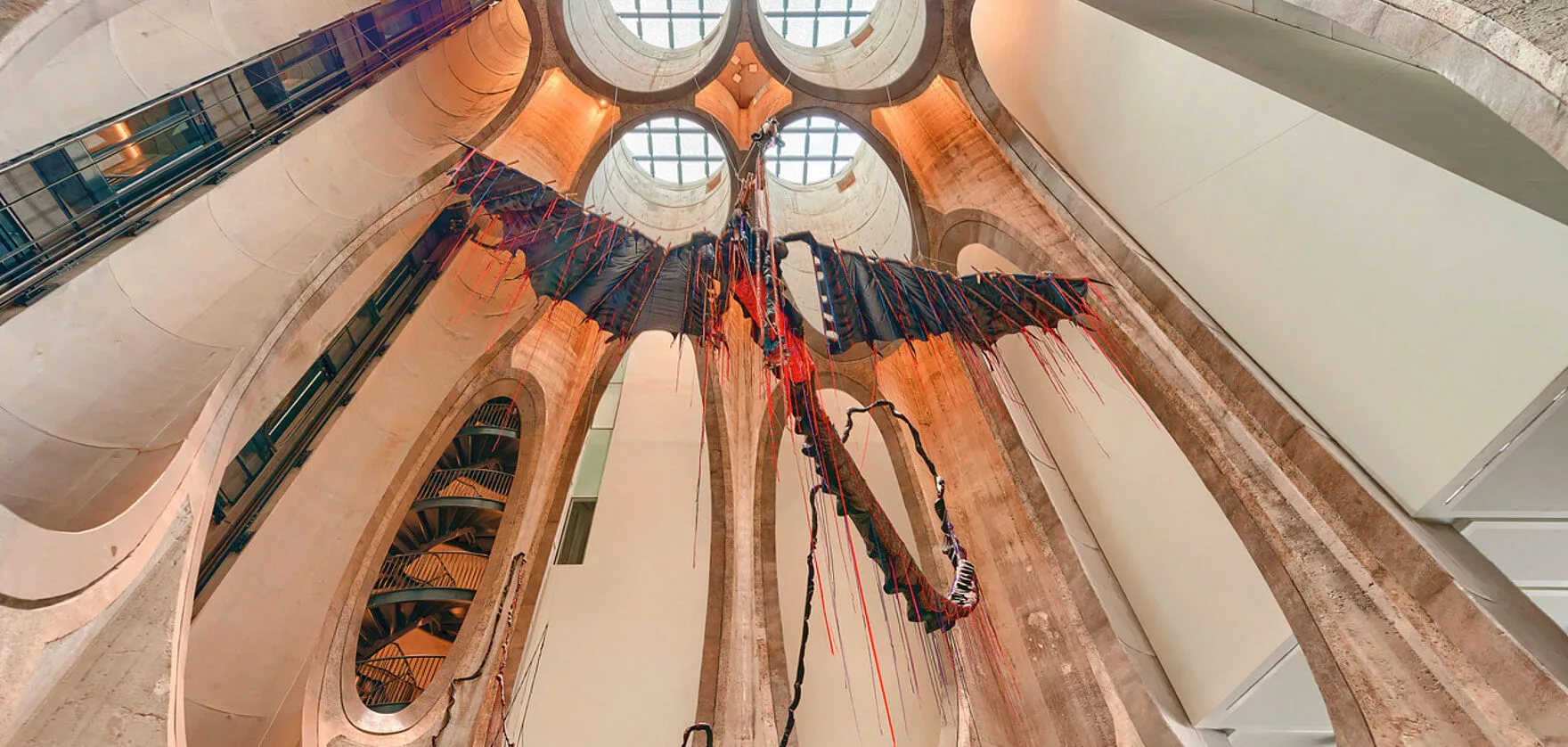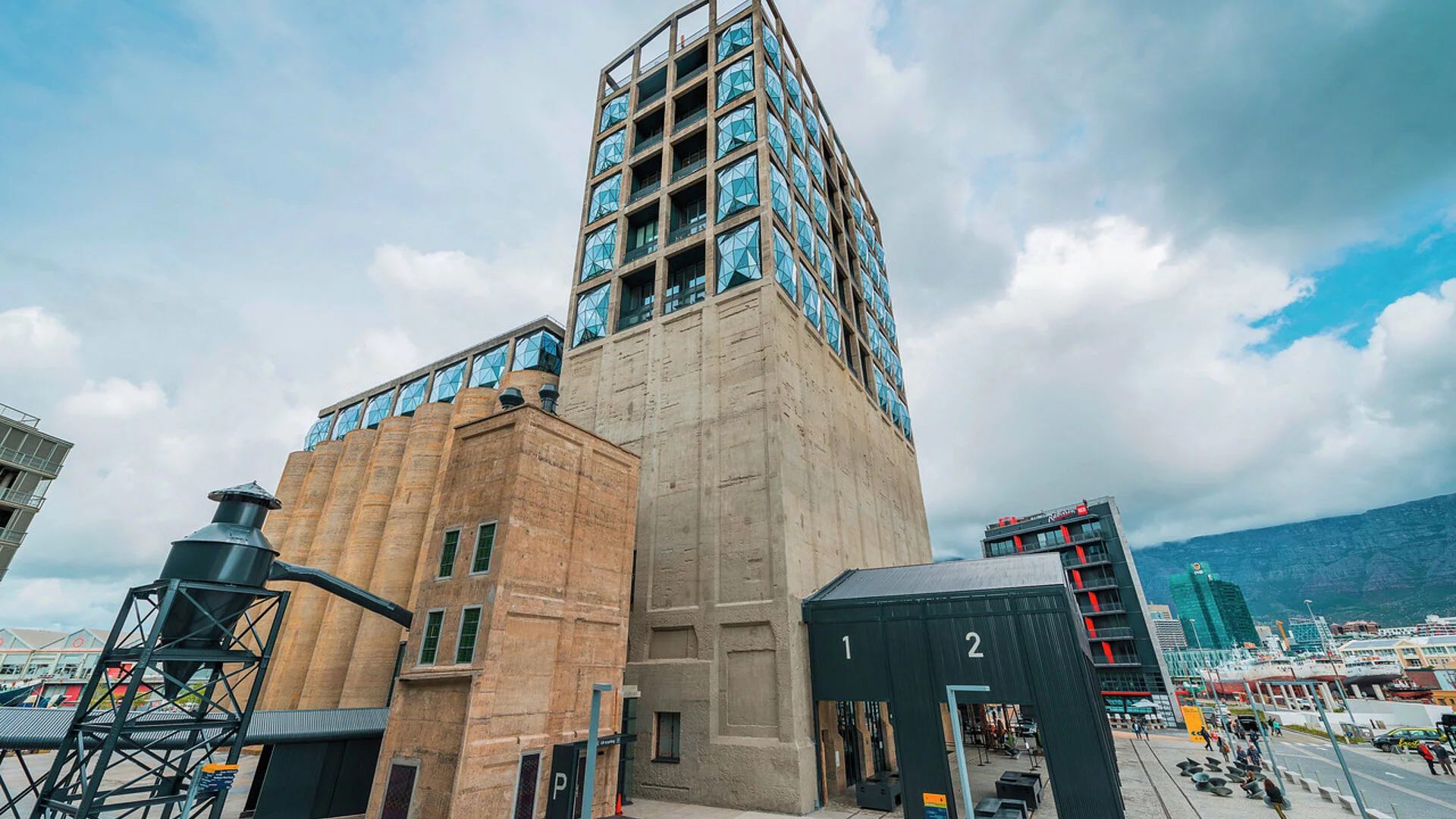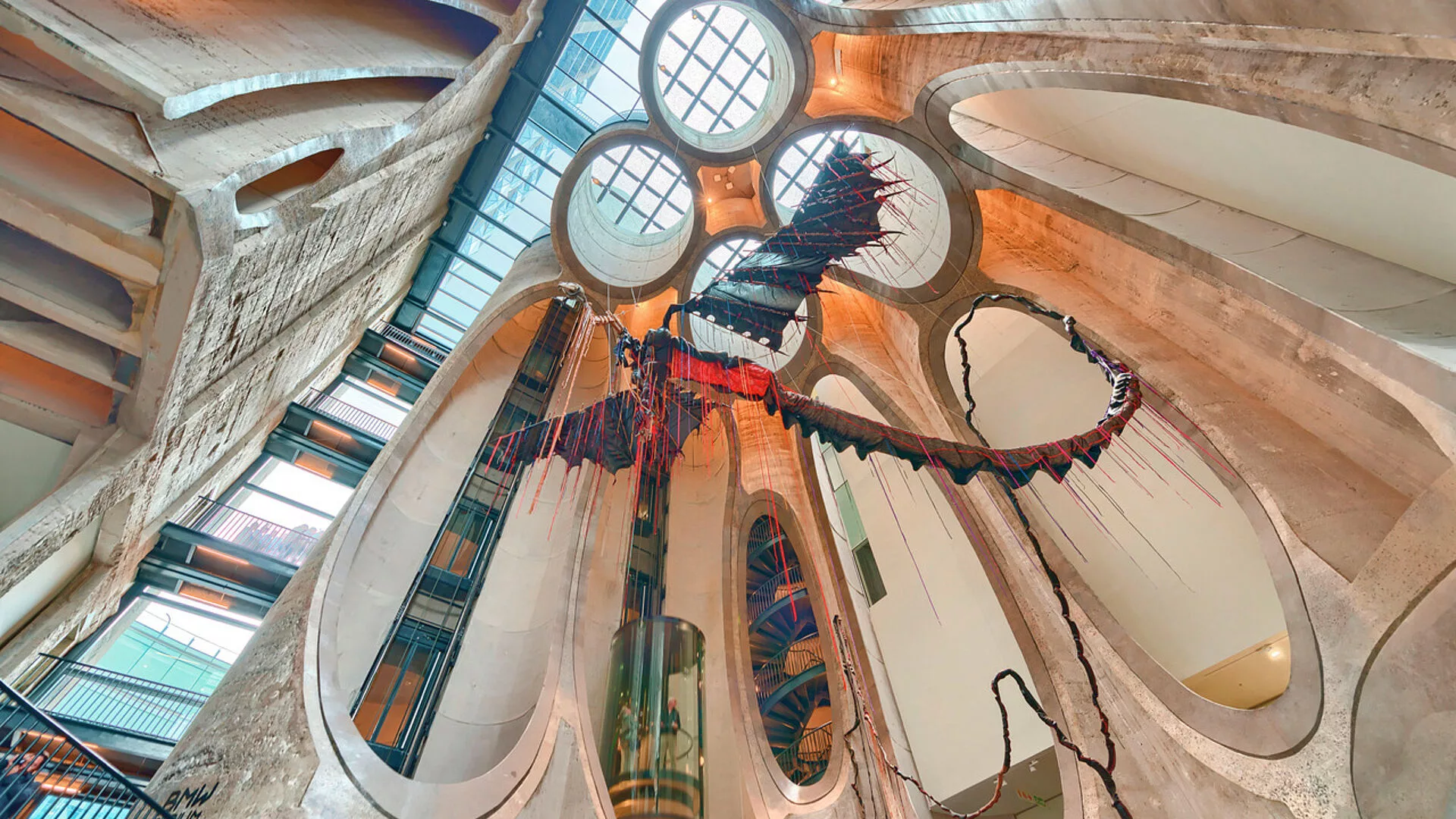Grand Hotel Łódż
The Grand Hotel in Łódź, a vibrant university and industrial city in Poland, has been the epitome of…

In Cape Town, a historic grain silo has become a museum for contemporary African art. The architects of Heatherwick Studio had the concrete walls of the granaries sawn open, creating an atrium of almost cathedral-like character. New concrete reinforces the old silo walls – it was only after being treated with KEIM-Concretal that it met the planners’ requirements.
It is a real magnet for the public: In the first month after its opening, 70,000 people flocked to the Zeitz Museum of Contemporary African Art (MOCAA). It is named after former Puma manager Jochen Zeitz, who is opening his private collection to the public, several thousand works by African artists from the 21st century. While works like this often migrate overseas, Zeitz is pursuing the idea of keeping them on the continent and exhibiting them locally. Admission is therefore free for local residents.
In line with the great importance of the museum, it rises far above the neighbouring buildings around Cape Town’s harbour. It is housed in an old silo building where corn was once temporarily stored before being shipped all over the world. Built in 1921-24, the building stretches up to 57 meters into the sky and is one of the landmarks on Cape Town’s skyline. It has been a listed building for several years now. Thomas Heatherwick and his team of architects from London were commissioned to convert the building into a museum. But where do you start with 42 vertical silo tubes?
Their circular walls are hardly suitable for hanging “flatware,” as paintings are ironically called in the jargon of curators…
They completely gutted part of the building to make room for 80 functional rectangular exhibition halls. Paintings, but also sculpture and video art are presented there. In the other part, however, the structure of the concrete silos was preserved and used to create an impressive atrium. As a tribute to the building’s past, the architects took the form of a corn grain, enlarged it a thousand times and cut this volume out of the concrete structure. The result is an unparalleled space with an organic shape.
There are still hints of the silos original purpose, but they are part of something new. Their roof was closed with glass, so that daylight seeps down through the 30-metre-high tubes.
Anyone entering the room at street level inevitably looks upwards and is almost reminded of a Gothic cathedral by the elements striving to reach the sky. In two of the side tubes, cylindrical elevators glide up and down, in others spiral staircases lead up to the exhibition halls.
The silos would not have been stable enough with a wall thickness of only 17 centimetres after the sawing had been completed. The architects therefore had them reinforced from the inside with an additional reinforced concrete layer that is 42 centimetres thick. Concreting was anything but easy. On the one hand, placing the formwork in the narrow silos was not child’s play, on the other hand, neither the concrete expertise of a Tadao Ando nor the legendary precision concreting skills of Swiss contractors are available in Cape Town.
As a result, it was not surprising that the concrete surfaces would have to be reworked. In fact, they showed a whole series of faults after it was stripped. In some places, the cement glue had leaked and left pockets of gravel. In other places the formwork panels had slipped slightly against each other, so that the wall surfaces had projections and recesses of 10 to 40 millimetres. Since the silo tubes are always bathed in oblique light from above, these irregularities cast long shadows and were particularly eye-catching. Even the very different surface qualities of the concrete by no means satisfied the requirements of the architects: in some places it was matt or slightly glossy and it showed different colour tones in other locations. In addition, there were the usual signs of the construction process such as markings with pencil or chalk, oily stains from the formwork and vertical streaks of dirt.


So, they started sorting out these issues, with the KEIM mineral product range being used at the suggestion of the architects. At first, the unevenness was levelled out. To do this, projections had to be removed, recesses filled, gravel pockets and smaller cavities filled, defects of more than four millimetres levelled out and flat surfaces produced.
Subsequently, the uneven material appearance with its various gloss gradations was dealt with. The walls were pre-wetted and then release agent residues or oily stains were removed.
Finally, a coating was planned that had to meet contradictory requirements: on the one hand, it had to match the different colours of the individual surfaces, and on the other hand, the concrete had to retain its stone character instead of disappearing under a covering layer of paint.
Here the “KEIM Concretal-Lasur”, a thin-layer glaze also called mineral stain, was able to show its strengths. As a mineral coating, it preserves the visible, open-pored structure of the concrete as it does not form a film on the surface. In order to achieve an appearance as close as possible to that of untreated concrete, several sample surfaces were tested. KEIM Concretal-Lasur can be diluted in any ratio to achieve the best possible match with the original concrete colour.
“We have tried different types of glaze, sometimes in stronger, sometimes in weaker dilution. And for pigmentation, we tested several shades of grey,” explains Wolfgang Höger, Managing Director of KEIM’s sales representatives in South Africa. “In the end, we ended up with an individual mixture of the two shades 9546 and 9550 in a ratio of 1:1. For the majority of the surfaces, two coats of Concretal-Lasur were sufficient. Only the particularly strong discolourations in the concrete were painted over several times by the painter”.
A total of 4,500 square metres were treated in this way. Visitors to the museum today have no idea of the elaborate, almost restorative after-treatment of the silo tubes. The concrete appears completely natural and even, as if it had come directly out of the formwork as it stands before our eyes now. The architects’ idea for this space, which relies on the visual power of raw concrete, can thus reveal its effect undisturbed.
The Grand Hotel in Łódź, a vibrant university and industrial city in Poland, has been the epitome of…
A special residential building has been created in a backyard in the heart of Berlin: barrier-free a…
Four modern, family-friendly apartment buildings with 149 flats and an underground car park stand on…
